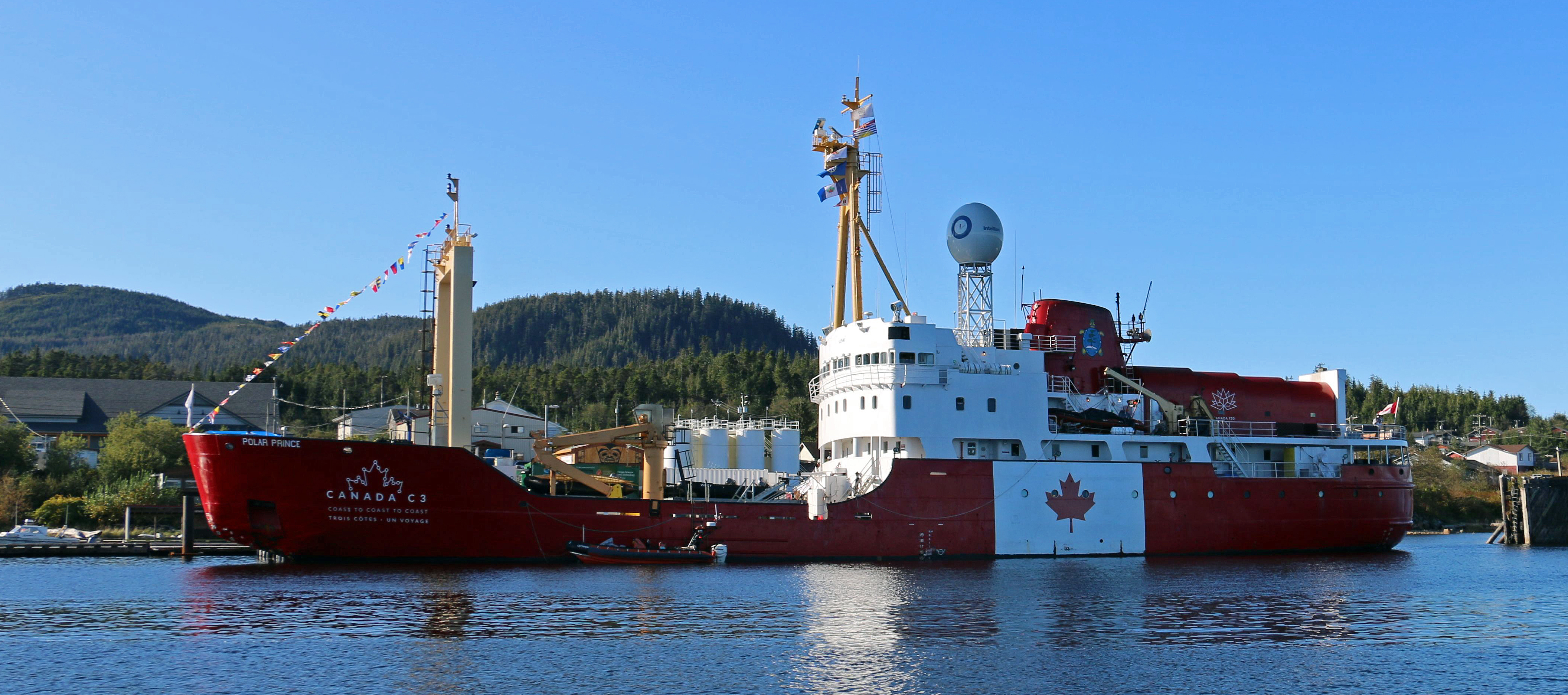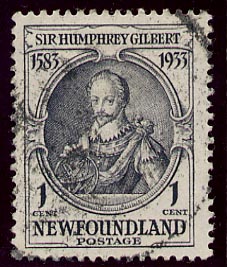|
CCGS Sir Humphrey Gilbert
CCGS ''Sir Humphrey Gilbert'' was a Canadian Coast Guard light icebreaker and buoy tender and now a privately owned Arctic icebreaker ''Polar Prince''. The ship entered service with the Department of Transport Marine Service in 1959 and transferred to the newly created Canadian Coast Guard in 1962, active until 1986. The icebreaker was sold to private interests in Newfoundland and the ship sat idle after 2001 until resold in 2009 to GTX Technology Canada Limited and renamed ''Polar Prince''. Rebuilt, the icebreaker is now plying the waters of the Arctic Ocean. In 2017, the vessel was temporarily rechristened ''Canada C3'' and used for a high-profile voyage around Canada's three maritime coasts as part of the nation's 150th anniversary. Design and description The icebreaker is long overall with a beam of and a draught of . The ship has a fully loaded displacement of and a gross register tonnage (GRT) of 2,153 and as built. The vessel is powered by diesel-electric eng ... [...More Info...] [...Related Items...] OR: [Wikipedia] [Google] [Baidu] |
Humphrey Gilbert
Sir Humphrey Gilbert (c. 1539 – 9 September 1583) was an English adventurer, explorer, member of parliament and soldier who served during the reign of Queen Elizabeth I and was a pioneer of the English colonial empire in North America and the Plantations of Ireland. He was a maternal half-brother of Sir Walter Raleigh and a cousin of Sir Richard Grenville. Biography Early life Gilbert was the 5th son of Otho Gilbert of Compton, Greenway and Galmpton, all in Devon, by his wife Catherine Champernowne. His brothers, Sir John Gilbert and Adrian Gilbert, and his half-brothers Carew Raleigh and Sir Walter Raleigh, were also prominent during the reigns of Queen Elizabeth I and King James VI and I. Catherine Champernowne was a niece of Kat Ashley, Elizabeth's governess, who introduced her young kinsmen to the court. Gilbert's uncle, Sir Arthur Champernowne, involved him in the Plantations of Ireland between 1566 and 1572. Gilbert's mentor was Sir Henry Sidney. He w ... [...More Info...] [...Related Items...] OR: [Wikipedia] [Google] [Baidu] |
Arctic Ocean
The Arctic Ocean is the smallest and shallowest of the world's five major oceans. It spans an area of approximately and is known as the coldest of all the oceans. The International Hydrographic Organization (IHO) recognizes it as an ocean, although some oceanographers call it the Arctic Mediterranean Sea. It has been described approximately as an estuary of the Atlantic Ocean. It is also seen as the northernmost part of the all-encompassing World Ocean. The Arctic Ocean includes the North Pole region in the middle of the Northern Hemisphere and extends south to about 60°N. The Arctic Ocean is surrounded by Eurasia and North America, and the borders follow topographic features: the Bering Strait on the Pacific side and the Greenland Scotland Ridge on the Atlantic side. It is mostly covered by sea ice throughout the year and almost completely in winter. The Arctic Ocean's surface temperature and salinity vary seasonally as the ice cover melts and freezes; its salinity is t ... [...More Info...] [...Related Items...] OR: [Wikipedia] [Google] [Baidu] |
Northwest Passage
The Northwest Passage (NWP) is the sea route between the Atlantic and Pacific oceans through the Arctic Ocean, along the northern coast of North America via waterways through the Canadian Arctic Archipelago. The eastern route along the Arctic coasts of Norway and Siberia is accordingly called the Northeast Passage (NEP). The various islands of the archipelago are separated from one another and from Mainland Canada by a series of Arctic waterways collectively known as the Northwest Passages, Northwestern Passages or the Canadian Internal Waters. For centuries, European explorers, beginning with Christopher Columbus in 1492, sought a navigable passage as a possible trade route to Asia, but were blocked by North, Central, and South America, by ice, or by rough waters (e.g. Tierra del Fuego). An ice-bound northern route was discovered in 1850 by the Irish explorer Robert McClure. Scotsman John Rae explored a more southerly area in 1854 through which Norwegian Roald Amundsen f ... [...More Info...] [...Related Items...] OR: [Wikipedia] [Google] [Baidu] |
Humphrey Gilbert
Sir Humphrey Gilbert (c. 1539 – 9 September 1583) was an English adventurer, explorer, member of parliament and soldier who served during the reign of Queen Elizabeth I and was a pioneer of the English colonial empire in North America and the Plantations of Ireland. He was a maternal half-brother of Sir Walter Raleigh and a cousin of Sir Richard Grenville. Biography Early life Gilbert was the fifth son of Otho Gilbert of Compton, Greenway and Galmpton, all in Devon, by his wife Catherine Champernowne. His brothers Sir John Gilbert and Adrian Gilbert, and his half-brothers Carew Raleigh and Sir Walter Raleigh, were also prominent during the reigns of Queen Elizabeth I and King James VI and I. Catherine Champernowne was a niece of Kat Ashley, Elizabeth's governess, who introduced her young kinsmen to the court. Gilbert's uncle, Sir Arthur Champernowne, involved him in the plantation of Ireland between 1566 and 1572. Gilbert's mentor was Sir Henry Sidney. He was ... [...More Info...] [...Related Items...] OR: [Wikipedia] [Google] [Baidu] |
Ceremonial Ship Launching
Ceremonial ship launching involves the performance of ceremonies associated with the process of transferring a vessel to the water. It is a nautical tradition in many cultures, dating back thousands of years, to accompany the physical process with ceremonies which have been observed as public celebration and a solemn blessing, usually but not always, in association with the launch itself. Ship launching imposes stresses on the ship not met during normal operation and, in addition to the size and weight of the vessel, represents a considerable engineering challenge as well as a public spectacle. The process also involves many traditions intended to invite good luck, such as christening by breaking a sacrificial bottle of champagne over the bow as the ship is named aloud and launched. Methods There are three principal methods of conveying a new ship from building site to water, only two of which are called "launching". The oldest, most familiar, and most widely used is th ... [...More Info...] [...Related Items...] OR: [Wikipedia] [Google] [Baidu] |
Yard Number
__NOTOC__ M N O P Q R ... [...More Info...] [...Related Items...] OR: [Wikipedia] [Google] [Baidu] |





